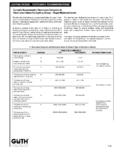Transcription of SURGICAL HIP DISLOCATION SURGERY - John Clohisy MD.
1 SURGICAL Hip DISLOCATION Before and After Your SURGERY 1 SURGICAL HIP DISLOCATION SURGERY It is important to us that all of our patients know what to expect before SURGERY , during their hospitalization and after SURGERY . Office Visits Planning begins with your first visit. At this visit, x-rays of your hip, a health history, including current medications and other medical problems, are discussed. The objective of the first office visit is to determine whether hip SURGERY is necessary. This decision is based on many factors including the degree of pain, the severity of limp, extent of activity restriction and your overall dissatisfaction with your hip condition. Your current health status is also an important consideration. After evaluating your x-rays and performing a complete physical exam, Dr. Clohisy will discuss the relative advantages and disadvantages of the SURGICAL procedure and the expected outcome. Radiography You may already have x-rays of your hips, but we may request that new x-rays are taken.
2 Specific views with the hip in various positions are necessary so we can define the bony anatomy of the hip and make individual plans for SURGERY . X-rays are also used during SURGERY in order to assure optimal correction of the hip. Scheduling SURGERY Once a decision has been made to have SURGERY , we will schedule the procedure. Several factors influence the SURGERY date. The most important factors are your general health and time needed for an appointment with the anesthesia department. The anesthesia department requires each patient to go through pre-admission testing. This testing is done at The Center for Preoperative Assessment and Planning (CPAP). This testing will be scheduled for you through Dr. Clohisy s office. This will be done within one month of SURGERY . A full history and physical is obtained at this visit. Any other test that may be required is also SURGICAL Hip DISLOCATION Before and After Your SURGERY 2 done, such as, blood work, urine tests, chest x-ray, or EKG.
3 You will discuss with the anesthesia providers your plan of care for anesthesia . We will also help you obtain the necessary equipment needed to maintain your independence and hip precautions after SURGERY . This includes a hip kit and a raised toilet seat with arms. They are provided on-site for your convenience or you may order from any equipment company. Most medical insurance plans do not pay for these particular items. SURGICAL Hip DISLOCATION Before and After Your SURGERY 3 PRE- SURGERY INSTRUCTIONS: Begin taking an iron supplement one time a day with meals. Start one month prior to your SURGERY date. Leave money, jewelry, and other valuables at home. We will have you remove fingernail polish, makeup, hair accessories, jewelry, glasses, contact lenses or anything else removable from your body. If you take NSAID s (ie. Aleve, Ibuprofen, Advil, Celebrex, Voltaren, Relafen), aspirin or aspirin containing medication, vitamins and herbal supplements, or a blood thinner you must stop one week prior to SURGERY .
4 Stop birth control pills (BCPs) at end of the last menstrual cycle prior to SURGERY . Stay off BCP for two cycles. Another form of contraception should be used. You must be healthy and free of any cold or infections. DO NOT EAT OR DRINK ANYTHING AFTER MIDNIGHT BEFORE YOUR SURGERY . Follow skin preparation instructions. Either using the Scrub care given from the CPAP department or liquid antibacterial soap: Take a shower the night before, sleep in clean sheets and pajamas and take another shower day of SURGERY . SURGICAL Hip DISLOCATION Before and After Your SURGERY 4 SURGERY DAY AND THE HOSPITAL COURSE On the day of SURGERY , you will report to the same day SURGERY area and be checked in by the admission nurse/team. You will then be assisted to a holding area where a member of the anesthesia team will start an IV line in your arm and your anesthesia plan. You will also meet the operative team. During SURGERY your family will be asked to wait in the SURGICAL waiting area.
5 A receptionist will be available to answer questions and keep family members posted on progress as the operative team informs them every two hours. After SURGERY you will be taken to the post anesthesia care unit (PACU). Most patients stay in the PACU for two or three hours before going to the orthopaedic inpatient unit (7300 or 7400). Orthopaedic Unit Admission Upon arriving to the orthopedic floor, a nurse will review your history and SURGERY performed. The nurse will familiarize you with your room and the floor routine. Your vital signs will be checked as ordered by your surgeon. Active care pumps on your calves will be used to help prevent blood clots. The incision will be covered by a bandage. There will be SURGICAL drainage tubes from underneath the bandage that collects blood from the wound. An IV will be used to administer antibiotics, pain medication and blood transfusions. You may receive oxygen through nasal cannula for 24 hours to help you breathe.
6 Vital signs will be taken frequently and will become routine after the first several hours. Pain Management Immediately following SURGERY , we will manage your discomfort by using IV and oral pain medications. You will begin to feel progressively better each day and the postoperative discomfort will diminish. During the first and second postoperative days your pain medicine will be changed to oral pills. SURGICAL Hip DISLOCATION Before and After Your SURGERY 5 Postoperative Physical Therapy You will get up to a chair the night of SURGERY . On the first day following SURGERY , all patients will start physical and occupational therapy. You will be touch-down weight-bearing at this point and have certain hip precautions. The physical and occupational therapist will show you all your restrictions and exercises including gait training with an assistive device. They will also work with your activities of daily living and show you how to ascend and descend stairs.
7 A CPM machine will be used for gentle motion of the hip. Discharge Planning Before discharge home, a case coordinator will be assigned to each patient and will make sure that the patient receives physical therapy in the hospital, family training on how to manage at home, and necessary home care services. A normal hospital stay is one to three days. You will be homebound for approximately one to two weeks after SURGERY . You may need help getting into and out of bed safely, going up and down stairs, bathing, getting a meal, putting out the trash, or caring for a pet. It is helpful to make arrangements for someone to be with you for at least two weeks, after you go home. We think home is the best place for patients to recuperate with the help of family and friends. You are not allowed to drive until full weight bearing and complete control of the operative leg is achieved. Most patients with a desk job can return to work between four and six weeks, while a manual laborer or more active SURGICAL Hip DISLOCATION Before and After Your SURGERY 6 worker should return three to four months after SURGERY .
8 You may return to work when you are ready and the hip is healed. Follow- up visits Follow-up examinations are very important. Visits are scheduled at four weeks, four months, and 12 months. After that yearly visits are then required. Most patients are allowed to be full weight-bearing after their four-week appointment. SURGICAL Hip DISLOCATION Before and After Your SURGERY 7 SURGICAL HIP DISLOCATION QUESTIONS AND ANSWERS ABOUT RECOVERY AFTER SURGERY Follow-up appointment: _____ _____4 weeks toe touch weight-bearing status _____8 weeks toe touch weight-bearing status After your SURGICAL hip DISLOCATION SURGERY , you may have questions about physical therapy, activity restriction, medications, return to work, and follow-up. The recommendations below should address many of these issues. Should I participate in Physical Therapy after SURGERY ?
9 Yes! Postoperative physical therapy is a very important part of your recovery. It is important to continue therapy at home to work on gentle range of motion and strengthening exercises all within the comfort level of your hip. You will use the CPM machine to 60 of flexion for six hours/day for four weeks. You may do active and passive flexion exercise to 90 at your comfort level. You may need to use your hip kit for your activities of daily living and raised toilet seat for four weeks. You will likely require three to four months of therapy before you have maximized your recovery. SURGICAL Hip DISLOCATION Before and After Your SURGERY 8 When can I discard the crutches? After your first appointment you will be given an outpatient physical therapy prescription to advance your weight-bearing status and increase strengthening exercises. You will progress to the next level (crutches one crutch/cane nothing) when your physical therapist provides useful feedback about the timing of this transition.
10 In general, you will use an assistive device until you can walk without a limp. How should I treat the hip incision? You cannot take a shower until the staples have been removed two weeks after SURGERY , unless you have been given waterproof dressings. If you do not have staples, you may shower one week from SURGERY if your incision has been dry for at least two days. You should change your dressing daily. Generally, moisturizers, lotions, and creams are not recommended for the first three weeks after SURGERY . The normal skin healing process will complete its course without topical treatments. If there are any problems with the incision, please call us immediately. These problems include: Drainage of fluid Bleeding Redness Pain Swelling Oozing You should put ice on your hip three or four times a day over the first seven to ten days. This is especially helpful after your therapy sessions. When can I begin driving?

